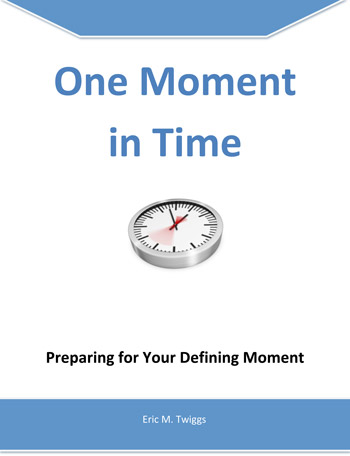Your 2-Minute Offense
“Work expands so as to fill the time available for its completion.”
- Cyril Parkinson
I am a fan of the National Football League. For me, the most intriguing aspect of the game is the 2-minute offense. When time is running out and a team is losing, they implement this” hurry up” offense in an attempt to catch up. There was one game in particular that comes to mind as a good example of this strategy.
The Washington Redskins were playing the New Orleans Saints. Through the first three quarters, the Redskins were winning every phase of the game. The Saints struggled to move the ball and score points.
Suddenly, in the 4th quarter with about eight minutes left, the Saints implemented the 2-minute offense. They scored more points in the last eight minutes than they did in the other three quarters combined! Why didn’t the Saints just run this offense the entire game?
This reminds me of some of the executives that I have worked with that get more done the week before they go on vacation than they did in the previous three weeks of the month. Or the clerks at the local retail store that are able to check out more customers in the last 30 minutes before closing than they did the previous three hours.
Or the college student that is able to get more accomplished on his term paper the week it's due than he did the entire semester. These three examples each have one thing in common -- improved productivity resulting from an urgent deadline. Is it possible to have the same level of focus on a project or task without the existence of a pending deadline?
Important But NOT Urgent
The first key to maintaining the right level of focus on an important project is to begin BEFORE it becomes urgent. Author Stephen Covey breaks down time management into four quadrants:
- Important and urgent
- Important but not urgent
- Not important and urgent
- Not important and not urgent
If the college student started the term paper at the beginning of the semester, it would be a Quadrant 2 activity because it is important, but not due until the end of the term. Waiting until the last minute makes it a Quadrant 1 activity. Resolve to identify and complete your important projects before they become urgent.
Time Block
Once you have identified the important project, the next step is to create the urgency. This can be done by scheduling specific blocks of time for completion. Using a timer to give yourself a deadline. For example, when I write my blog, I set my timer for 30 minutes. When the alarm buzzes, I have to stop whether I am finished or not. Having a deadline forces me to make the best use of the time that I have. I eliminate all outside distractions and only focus on the task at hand. Writing my blog is important, and blocking out the time allows me to finish well before it becomes urgent.
Some of the good football teams run the 2-minute offense early in the game when they are ahead on the scoreboard. If you commit to identifying your Quadrant 2 activities, and blocking out time for completion, you will have successfully implemented your own 2-minute offense!
Sincerely,
Eric M Twiggs
Your Procrastination Prevention Partner
